The Witcher 3: Wild Hunt Wiki Guide: Find information on Weapons, Signs, Locations, Quests, Diagrams, Geralt, Ciri, Walkthroughs and more!
The Witcher 3 Wiki Guide: Everything you need to know about The Witcher 3: Wild Hunt
The Witcher 3 Wiki covers all you need to know in The Witcher 3's fantasy world filled with monsters and war, from information about DLCs, Skill Trees, Mutagens, Weapons, Armor, Witcher Gear, Signs, Potions, to guides on how to complete Quests, rewards given by Contracts, how to Romance certain characters in The Witcher 3: Wild Hunt. Play as Geralt of Rivia, one of the last remaining Witchers on the Continent, as he searches for his daughter and helps the commonfolk with their monster problems when he comes across them. Find all you need to gear up and prepare for what awaits you in The Witcher 3 here.
What is The Witcher 3: Wild Hunt?
The Witcher 3: Wild Hunt is an open world RPG developed by CD Projekt Red. It is the third installment in The Witcher series based on the book series of the same name written by Andrzej Sapkowski. The Witcher 3 is set in a fantasy world inspired by Polish and Slavic mythos and follows the story of the famous (or infamous) Wolf-School Witcher, Geralt of Rivia. It starts about nine months after the events of The Witcher 2, with Geralt travelling alongside Vessemir through the war-torn region of White Orchard. After being brought back from the dead and recovering his lost memories in the last game, Geralt is contacted by a long-time friend and lover to aid him in finding his adopted daughter, Ciri, also referred to as the Lion Cub of Cintra.
When Was The Witcher 3 Released?
The Witcher 3: Wild Hunt was released on the 18th of May, 2015. The game was initially announced in 2013 to be released by the 24th of February 2015, however, it was later delayed to May. The Witcher 3 is available on PC, the PlayStation 4 & 5, the Nintendo Switch, and the Xbox One and Series X|S.
The Witcher 3 System Requirements
Recommended Specs
- OS: 64-bit Windows 7 or 8
- Directx Version: DirectX 11
- Processor: Intel CPU Core i7 3770 3,4 GHz or AMD CPU AMD FX-8350 4 GHz
- Memory: 6 GB
- Graphics Card: Nvidia GPU GeForce GTX 770 or AMD GPU Radeon R9 290
- Storage: 40 GB
Minimum Specs
- OS: 64-bit Windows 7 or 8
- Directx Version: DirectX 11
- Processor: Intel CPU Core i5-2500K 3.3GHz or AMD CPU Phenom II X4 940
- Memory: 6 GB
- Graphics Card: Nvidia GPU GeForce GTX 660 or AMD GPU Radeon HD 7870
- Storage: 40 GB
The Witcher 3: Wild Hunt |
|
|---|---|
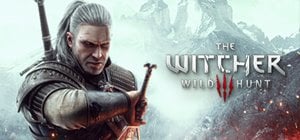 |
|
| Initial Release Date | May 18, 2015 |
| Publisher | CD PROJEKT RED |
| Developer | CD PROJEKT RED |
| Platforms | PC, PlayStation®5, PlayStation®4, Nintendo Switch, Xbox One, Xbox Series X|S |
| Genre | Open-World RPG |
| Players | Single-player |
The Witcher 3 News
NEW! Current-Gen Update Releasing in December 14 2022!Patch 1.08
Sex & Romance Guide
Crafting Materials List with all Monster Remains
Scavanger Hunt: Bear School Gear Guide by Caythwyn
Two Expansions in the Works
Developer Interview by Fextralife
16 Free DLCs
The Witcher 3 All DLCs and Versions
Hearts of Stone
Hearts of Stone is the first official expansion pack for The Witcher 3. It was initially released on October 13th, 2015 for the PC, PlayStaion 4 and Xbox One, and is now available on all platforms that The Witcher 3 is available for.
Step again into the shoes of Geralt of Rivia, a professional monster slayer, this time hired to defeat a ruthless bandit captain, Olgierd von Everec — a man who possesses the power of immortality. This expansion to “The Witcher 3: Wild Hunt” packs over 10 hours of new adventures, introducing new characters, powerful monsters, unique romance and a brand new storyline shaped by your choices.
The expansion adds new Quests and Contracts to take up, namely against the immortal Olgierd von Everec. In addition, it introduces the Enchanting mechanic. This new upgrade mechanic uses Runewords and Glyphwords instead of the base Runestones and Glyphs to breathe new life into how Weapons and Armor are used.
Blood and Wine
Released on May 31st, 2016, Blood and Wine is the second and final expansion pack for The Witcher 3: Wild Hunt. It was initially released on the PC, PlayStation 4 and Xbox One, and is now available on all platforms you'll find The Witcher 3 on.
Become professional monster slayer Geralt of Rivia and explore Toussaint, a remote land untouched by war, where you will unravel the horrifying secret behind a beast terrorizing the kingdom. With all trails leading to dead ends, only a witcher can solve the mystery and survive the evil lurking in the night. Introducing an entirely new realm to traverse, new characters and monsters, Blood and Wine is a 20+ hour adventure full of dark deeds, unexpected twists, romance and deceit.
Gameplay in The Witcher 3 improves every expansion, and it is no wonder that Blood and Wine is a fan favorite with how much it bumps up player's gaming experiences. The expansion adds a great deal of new content including Toussaint, a new region, more Quests and Contracts, a customizable home, Corvo Bianco, an Armor dyeing system, new Mutagens, and most excitingly, a new Gwent Deck.
Complete Edition
Originally named the Game of the Year Edition, The Witcher 3: Wild Hunt - Complete Edition released on August 30, 2016.
Become a professional monster slayer and embark on an adventure of epic proportions!
Upon its release, The Witcher 3: Wild Hunt became an instant classic, claiming over 250 Game of the Year awards. Now you can enjoy this huge, over 100-hour long, open-world adventure along with both its story-driven expansions worth an extra 50 hours of gameplay. This edition includes all additional content - new weapons, armor, companion outfits, new game mode and side quests.
The Compete Edition of the game includes both expansion packs - Hearts of Stone and Blood and Wine - as well as all free DLCs in one pack. It features all technical and visual improvements from previous updates, as well as a new user interface inspired by the feedback of The Witcher community.
Next-gen Update
The Next-Gen Update is an upcoming free patch for all versions of The Witcher 3 projected to be released on December 14, 2022. All free content added in the DLC will be available on all platforms, however, most visual and gameplay improvements will only be available for the PC, PlayStation 5, and Xbox Series X|S.

Enhanced with the power of next-gen consoles and modern PC hardware in mind, the upcoming update will feature dozens of visual, performance and technical enhancements, including ray tracing support, faster loading times on consoles, a variety of mods integrated into the experience, and much more! On top of that, we’re adding a set of DLCs inspired by Netflix’s The Witcher series, such as new weapons and armor for Geralt and alternative looks for select characters.
The update focuses on major improvements to graphics and gameplay - ray tracing, new FSR 2.1 & DLSS 3 support, improved environmental textures, new HUD options, more comprehensive map filters, a dynamic minimap, Sign quickcasting, and so much more. In addition, the update will add new Quests, NPC looks, and equipment inspired by the Netflix The Witcher show. Get ready to relive through the game with even more opportunities for immersion and an environment that can somehow be even more stunning than before.
Combat and Gameplay in The Witcher 3
What are Weapons in The Witcher 3?
The Witcher 3 features a multitude of weapons that are split into two main categories - Steel Weapons and Silver Weapons. Silver Weapons are most effective against Monsters and are relatively ineffective against humanoids and animals, while the reverse is true for Steel Weapons. Steel Weapons are further split into Steel Swords and Secondary Weapons such as Axes and Maces. Axes boast higher damage than Steel Swords, while Maces deal bludgeoning damage instead of the standard damage, however both have the downside of not having any Runestone sockets or the ability to take oils. Crossbows and Bolts are another option available to you in combat. They deal less damage than Steel and Silver Weapons, but have the benefit of being able to hurt Enemies from ranged and ground most flying Enemies. While underwater, you are limited to only using your Crossbow to fight. Crossbows cannot be upgraded, but each Bolt has different effects that compensates for it. The Combat Skills skill tree can bolster Geralt's proficiency with weapons.
With the exception of Witcher Gear, upgrading weapons in The Witcher 3 comes in the form of Runestones. Most Silver and Steel Swords will have 1-3 Runestone sockets available depending on its rarity. Runestones have varying effects such as providing a damage boost, adding the chance to poison on hit, freezing the enemy on hit, and so on. Like Weapons, they have a tier system as well, with Greater Runestones providing a larger effect than it's regular and Lesser counterparts. You'll be able to find Runestones by defeating Enemies, in chests, or by asking a blacksmith to craft one if you have the correct diagram unlocked. There is a similar upgrade system for Armor, but instead of Runestones, Armor pieces take Glyphs that boost the intensity of one Sign.
Oils are another way of boosting your damage in The Witcher 3. They are consumables that can be crafted through Alchemy. Once applied to an equipped sword, you gain a damage boost to a certain type of enemy (i.e. applying the Beast Oil to a blade boost your damage against Beast-type enemies). Each Oil has three versions of different quality: Standard, Enhanced, and Superior. Each Standard Oil provides a 10% damage multiplier and has 20 charges, while Enhanced Oils provides a 25% damage multiplier and have 40 charges, and Superior Oils provides a 50% damage multiplier and have 60 charges. Oils have to be crafted (with a few exceptions) and the locations for the manuscripts required to craft them are randomized.
Signs in The Witcher 3 Wild Hunt
Signs are the magic spells available to Witchers in The Witcher franchise. As Geralt, you have access to 5 different signs:
- Aard: A directed blast of telekinetic energy that staggers opponents, leaving them open for a subsequent attack.
- Igni: A directed fiery blast that damages enemies. Damage scales with Sign intensity.
- Yrden: Magic trap that slows enemies who enter its area of effect.
- Quen: Protective shield that lasts until it has absorbed damage totaling 5% of maximum Vitality.
- Axii: Charms an opponent's mind, temporarily eliminating him from combat.
Using a Sign requires your whole Stamina bar. Signs scale off of Sign Intensity, but the effect it has differs for each sign. Besides being used in combat, Aard, Igni, and Axii have out-of combat uses. Aard can be used to break fragile walls and doors, as well as extinguish most fire sources, while Igni can be used to ignite fire sources. Axii can be used while riding Roach to calm her and reduce her fear gauge, as well as used in certain dialogue options to avoid confrontations. All Signs can be buffed by investing in the Signs skill tree.
Potions, Decoctions & Bombs
Besides Oils, you can make many other useful consumables through Alchemy in The Witcher 3, such as Potions and Decoctions. These are consumables that can grant Geralt a variety of different effects ranging from increased damage, to increasing Stamina regeneration, to the ability to see in the dark, to increasing carry weight, and so on. You can have up to two Potions/Decoctions equipped in your hotbar for quick access, but can also be consumed through the Inventory screen. Drinking any Potion/Decoction increases Geralt's Toxicity and changes Geralt's facial appearance, with Potions increasing it by 15-25 and Decoctions increasing it by 70. If you reach or exceed the Toxicity threshold (by default it's 75), Geralt will start to take small amounts of damage over time. Toxicity from Potions slowly decreases on it's own over time, but that of Decoctions only goes away after the effects of the Decoction have expired. You will be unable to drink any more Potions/Decoctions if the consumable you are about to take would take Toxicity to over your current maximum (by default 100).
Decoctions differ from Potions in that they require the Mutagen that corresponds to the Decoction type (i.e. a Succubus Decoction requires a Succubus Mutagen to craft). Mutagens are special drops from enemies that, instead of in Decoction crafting, can be used in conjunction with equipped Skills to provide a boost to Vitality, Damage, or Sign Intensity depending on the color of the Mutagen and Skills.
Bombs are another useful tool you can make through Alchemy. As expected from their name, Bombs are throwable consumables that deal damage or apply certain effects to Enemies they are thrown at. These effects rang from preventing enemies from transforming, to applying certain status effects on them, to lowering their defense. Like Potions/Decoctions, you can have up to two Bombs in your quick access slot at all times.
Charges for all alchemical products - Oils, Potions, Decoctions, and Bombs - can be restored through meditation if you have any strong alcohol in your inventory. Like Runestones and Glyphs, items made through alchemy have three tiers of effectiveness. You can improve Geralt's prowess with alchemy through the Alchemy Skills skill tree.
The Witcher 3: Witcher Gear
Witcher Gear are special sets of Armor and Weapons that provide set bonuses when you have 3 or 6 pieces of the same set equipped. These sets of gear are themed around the different Witcher Schools - Wolf, Cat, Bear, and Griffin. They cannot be found in the world and instead must be crafted by a blacksmith. Before crafting Witcher Gear, you will have to find treasure maps from merchants or throughout the world. These treasure maps will trigger special scavenger hunts in your Quest Log that will help you navigate your way to the diagrams required to craft the corresponding sets. Each set of Witcher Gear comes in 5 tiers ranging from the default tier to Grandmaster. Set bonuses will only activate at the Grandmaster tier of gear. The Blood and Wine DLC is required to reach this tier of armor as you are limited to a maximum of Mastercrafted armor in the base game. Starting a New Game + gives you access to the Legendary version of the Witcher Gear, which then in itself has the same 5 tiers.
You are unable to jump straight to Grandmaster, and must instead work your way up through each upgrade tier bit by bit. Starting from the Mastercrafted tier, you will be required to seek the help of a Master Blacksmith and Armorer. In the base game, this means that completing the quests Of Swords and Dumplings to unlock Hattori's services and Contract: Components for an Armorer to unlock Yoana's services will be necessary if you want the highest tier of Witcher Gear.
Exploration in The Witcher 3
Exploration constitutes a big part of The Witcher 3's gameplay. The map is divided into 6 main regions - White Orchard, Vizima (in which you only have access tot he Royal Palace), the Pontar (consisting of Velen, Novigrad, and a small part of Redania), the Skellige Isles, Kaer Morhen, and with the Blood and Wine DLC, Toussaint. Within each region, you'll be able to find a wide array of Point of Interests marked on your map by a question mark. These points of interests can be one of the following:
- Abandoned Site: A place (usually village) abandoned by it's inhabitants due to a monster infestation or bandit attack. Clear out the hostiles in the area for NPCs and Merchants to move back in, giving you access to the area's services.
- Bandit Camp: A camp inhabited by hostile bandits. Clear out the camp and loot the bandits' cache to mark it off the map. Camps can vary in size and number of hostiles.
- Guarded Treasure: Chests guarded by one or more monsters. Contains valuable loot.
- Hidden Treasure: Points of interest that usually contain a letter or map starting a quick treasure hunt nearby.
- Monster Nest: Nests of hostile monsters. Nests have to be bombed after defeating all enemies to get marked off the map.
- Monster Den: Caves inhabited by hostile monsters.
- Person in Distress: Similar to Bandit Camps, inly now with a hostage. Clear the camp and free the captive to gain access to a new merchant.
- Place of Power: Ancient structures that Geralt can activate to gain a buff to one Sign and one Skill Point.
- Smugglers' Cache: Barrels of loot hidden by smugglers. Many can be found in the waters of the Skellige Isles.
- Spoils of War: Loot that can be found in the aftermath of a battle.
A tool that is fundamental not only to exploration but also in completing many quests are Geralt's Witcher Senses. Holding the button down will highlight lootable chests, objects of interest, clues to completing quests and show you sources of certain noises, such as monster growls. Important quest items glow with a blue shimmer, clues such as tracks, smells, and important chests are highlighted in red, while previously searched clues and chests/bodies that can be looted are highlighted in orange.
Different Quests in The Witcher 3
Quests are another crucial part of gameplay in The Witcher 3. You can find new quests to take on by reading Notice Boards marked on the map, speaking with NPCs marked with a large yellow exclamation mark, or buy buying items marked with the same yellow exclamation marks from merchants. They are split into 4 main categories.
Main Quests follow the main story required to finish the game. You will be playing and following along with Geralt for the most part, but will occasionally have the opportunity to play Ciri during NPC flashbacks. The game will warn you when you are about to reach the point of no return, so there's no need to worry about being locked out of side quests from progressing the Main Quest.
Secondary Quests are smaller side quests not required to finish the game. These quests can be given to you by both important and unimportant NPCs alike. Those given by story-related NPCs may affect the choices you have in the Main Quest. There are a variety of Secondary Quests, from fetch quests, to playing Gwent.
Witcher Contracts are hunting-type quests given by NPCs in need. Witcher Contracts differ from Secondary Quests in that you can haggle for the reward you receive by speaking through a dialogue option with the questgiver. In this haggling process, you are given a price range you can ask for starting at the base price. Ask too much of the NPC and their annoyance level increases. If you cap their annoyance level, you are forced to take the base reward of the contract.
Treasure Hunts are exactly what their name implies. You unlock more treasure hunts by finding or buying treasure maps scattered around the world. The most noteworthy treasure hunts are Scavenger Hunts - quests that lead you to finding the diagrams required to craft Witcher Gear.
Travelling around the Continent
Given the vastness of the world of The Witcher 3, it is no surprise that travelling on foot can become a bit of a hassle a few hours into the game. Luckily, you are provided multiple ways of circumventing the need to stay on foot. Early into the game, you are introduced to Roach, Geralt's trusted travel companion, steed, and favorite conversational partner. Roach has three speeds - walking, cantering, and galloping. You can think of it as walking, jogging, and running for people. Roach has her own Stamina bar. It is consumed while she is galloping, but not walking or cantering. If she runs out of Stamina while galloping, she goes back to cantering and can be made to gallop again by activating the button once more when her Stamina recharges. Roach's Stamina can be increased by equipping a better Saddle on her.
While on Roach, you are able to jump over obstacles and fight monsters. You, however, are only able to swing your sword and shoot your crossbow while on horseback and are unable to use your Bombs and Signs (with the exception of Axii). There are special combat rules while riding Roach - if you manage to hit an opponent while galloping at full speed, the blow will usually be a critical hit and there's a chance that the hit will insta-kill the enemy. In addition, being in close proximity to hostiles and getting hit on horseback increases Roach's fear meter. Reaching the cap will result in Roach panicking and flinging you onto the ground, giving Enemies a few free hits on you. Using Axii while on Roach will decrease her fear by a small amount and her maximum fear can be increased by equipping her with better Horse Blinders.
There are two other pieces of gear that can be equipped on Roach - Saddlebags and Trophies. Saddlebags simply increase Geralt's maximum carry weight, while Trophies, collected from completing Witcher Contracts, provide several miscellaneous bonuses, such as bonuse gold and exp from defeating enemies.
Roach isn't the only way to travel quickly around the world. You can also find signposts at villages, towns, points of interest, and just generally scattered around the Continent. These signposts act as waypoints, allowing you to fast travel between them when interacting with one.
Bestiary and Monsters
While exploring, doing quests, and enjoying the game, you will certainly bump into all sorts of Creatures and Monsters. After defeating a new creature or reading certain books, their entry will be recorded in the Glossary under the Bestiary option. The Bestiary provides invaluable information on every monster, from lore, to their fighting habits and tactics, to what Bombs, Potions, and Signs are most effective against them. When your Bestiary gets updated, you'll definitely want to check out the new entries. After all, knowledge counts as much as your silver sword.
Other FAQs for The Witcher 3
Where can I buy a crossbow The Witcher 3?
In The Witcher 3, Geralt can use small starter crossbows when he acquires one from Vesemir in White Orchard. On the other hand, crossbows can be acquired in different ways such as obtaining it as a reward for completing quests, you can craft one, through loot, and by purchasing one from a vendor or merchant. You can also look for Éibhear Hattori to check his wares, he is a blacksmith that you can find in Novigrad, at his house (West of Putrid Grove). For a full list of all the available crossbows and information on where to find them, you can check our Crossbows page.
Which painting should I buy in The Witcher 3?
For this query, this is related to the Hearts of Stone DLC quest, Avid Collector. For starters, do not share this information with Vimme, because he’ll try to outbid you for the painting, and you’ll end up paying three times the original asking price. The goal is to obtain the van Rogh painting and sell it for a higher value to the Novigrad book merchant, Marcus Hodgson. Now, the Art Dealer will challenge you by testing your knowledge about the paintings, he'll be dismissive, but tell him you know art and he'll ask you to pick out the one by artist E. van der Knoob. The correct painting is the Portrait of a Merchant. By doing this, Yaromir will give you information about the van Rogh painting, "Starry Night Over the Pontar". Again, do not share the information to Vimme, lie about it, and continue the quest by participating on the bidding.
Where can I buy Shells in The Witcher 3?
You can purchase all the shells and sea shells from the merchant in Hierach Sqaure in Novigrad. However, if you've just started the game, upon reaching Velen, head north and swim or take a boat to Novigrad. When you have the shells, proceed to a nearby armorer and dismantle the shells into pearls. You can then sell those pearls for great value.
Where can I find the Enhanced Vampire Oil in The Witcher 3?
A copy of this formula can be bought from Keira Metz. She can be found at a hut just outside of Midcopse. On the other hand, if you want to buy the actual item, the Enhanced Vampire Oil, you can purchase it from a herbalist in Rannveig, named Jonna. Just make sure you don't kill her in the secondary quest, The Nithing.
Where can I find Greater Glyphs The Witcher 3?
Diagrams for Greater Glyphs in The Witcher 3 can be purchased from multiple merchants, here are some of those Merchants:
- Keira Metz - Location: at her hut near Midcopse
- Gremist - Location: at Gedyneith on Ard Skellig
- Armorer in Kaer Trolde citadel
- Armorer - Location: in Larvik on Hindarsfjall
You can also try to find a smith (for runes) and an armorer (for glyphs) located in Kaer Muire.
Which Mask should I wear in The Witcher 3?
The Mask that you should wear is related to the quest, A Matter of Life and Death, in The Witcher 3. You'll need to buy Triss' Fox Mask from Elihal to give to Triss so Ingrid will recognize her at the party. And as for Geralt, it doesn't really matter which mask you should wear to the ball, you can choose whichever you feel that matches his outfit. And wearing a mask is only used as a key item, and it doesn't add any value or changes to Geralt's stats.
How do I sell Items for Full Price in The Witcher 3?
The most efficient way to sell items for their full price or at least at a greater value is by selling an item to its applicable merchant. Selling armor to an armorer, ingredients to an alchemist, weapons to a blacksmith, booksellers for books, and more. Novigrad is a good area to sell items since it has many rich areas.
Where can I find a Mandrake Root in The Witcher 3?
The Mandrake Root is an alchemy ingredient that is sold by the following merchants or herbalist:
- Tomira in White Orchard
- Herbalist at the roadside shrine in White Orchard
Where can I buy a Dancing Star Bomb in The Witcher 3?
The Dancing Star bonb produces a fiery explosion that can cause nearby opponents to start burning. Destroys nearby monster nests. You can craft this item by using 2x Sulfur and 1x Saltpeter. The Dancing Star Bomb in The Witcher 3 can be located in the following areas listed below:
- Harpy Feeding Ground in Velen,
- Herbalist's Hut in Novigrad (Northeast of Oxenfurt, 248 Crowns)
- Oxenfurt: The Manuscript for this bomb can be bought from the Blacksmith in Oxenfurt.
- Sund: Within a chest, on an island north of Sund would be another copy of the manuscript.
How do I craft swords in The Witcher 3?
In The Witcher 3, Geralt (or the player themselves) cannot craft a sword or any weapon. Swords in The Witcher 3 can only be crafted by blacksmiths that can be found in various places. But you'll need to gather the required materials and pay the crafting fee. You can check our Blacksmiths page to learn more about blacksmithing and to find a list of available Blacksmiths in The Witcher 3.
Who sells Fur in The Witcher 3?
Fur or Fur Scarp in The Witcher 3 is a common crafting component in the game. There are two way to acquire this, by purchasing it from a merchant or dismantling certain items. (1) Willis at his forge in White Orchard sells it and the (2) Quartermaster at the Nilfgaardian Garrison. On the other hand, it can be obtained by dismantling the following items:
- Rabbit Pelt
- Squirrel Tail
- Bear Hide
- Old Bear Hide
- White Bear Hide
- White Wolf Hide
- Wolf Hide
What is the Red Bar under the Stamina in The Witcher 3?
The red bar under the Stamina bar in The Witcher 3 is the Adrenaline Bar that fills up with Adrenaline Points. Adrenaline Points build up every time you strike an enemy, and it will slowly decrease when you're not attacking or out of combat. Adrenaline is mainly used to trigger certain abilities in combat. To learn more about other combat mechanics, as well as the HUD of the game, you can visit the Combat page.
How do I read letters in The Witcher 3?
To read letters, notes, and other documents in The Witcher 3, look for the document in the quest items and simply choose it to read what it written.
How good is Armor-Piercing in The Witcher 3?
Armor-Piercing in The Witcher 3 is essential since most enemies like monsters have armor, and weapons that have armor-piercing properties help with easily destroying its armor or pierce through it. The damage is calculated by ignoring that percentage of the armor when you are hitting the enemy and inflicting damage.
Where can I find Moon Dust in The Witcher 3?
The Moon Dust in The Witcher 3 is a bomb. You can craft this with the following materials, 1x Saltpeter + 2x Quicksilver Solution. And alternatively, you can purchase it from the following merchants:
- Sold by the Halfling Herbalist in Novigrad
- Keira Metz - Location: at her hut near Midcopse
Where do I sell Ancient Coins in The Witcher 3?
You can sell the Ancient Coins in The Witcher 3 at a shopkeeper near LaFargue's place or travelling merchants. Alternatively, you can dismantle these ancient coins to acquire crafting components that you can use to craft other items that you may need.
Which is the Best School Gear in The Witcher 3?
The Feline School gear in The Witcher 3 is considered to be the best armor in the game. It is a set of light armour but consists of unique bonuses. The Feline gear has increased resistance to elemental attacks, making it best to use when fighting against monsters, and each armour piece provides extra power to Geralt's attacks. Combining it with Feline swords, you'll receive a boost to critical hit chance and bleed status.
How do I get a house in The Witcher 3?
First, you'll need to own the Blood and Wine DLC, in which the DLC is already included in the Complete Edition. During the main quest, The Beast of Toussaint, you will receive the deed and the keys to the property, it cannot be missed, and you simply need to play through the quest. This estate is the Corvo Bianco Vineyard. At first, you'll find the vineyard to be in ruins and you can only use the estate to store items and to rest, but during the course of the side quest, Corvo Bianco, you can rebuild the vineyard.
Who sells the Albedo Diagram in The Witcher 3?
If you're lucky, you may find the Albedo Diagram early in the game inside one of the chests around White Orchard’s battlefield, since several players have reported that they were able to find it there. But if it's not, you can purchase this from a few merchants in the game. Gremist on Skellige mostly has it in stock and/or the merchant at the Bloody Baron’s castle. Just check their inventory to see if it's available.
Where can I buy Monster cards in The Witcher 3?
Monster Cards in The Witcher 3 Wild Hunt are quite rare and requires you to keep playing against other NPCs who play Gwent. There are some quests that reward you with certain cards if you successfully complete it and there are random NPCs like merchants, blacksmiths, armorers, herbalists, and bankers whom you can challenge. And if you win, the cards you acquire as a reward are, of course, randomized. If you are lucky though, you may obtain a monster card. On the other hand, innkeepers and barkeepers also sell certain cards.
What is the last mission in The Witcher 3?
The last and final main quest in The Witcher 3 Wild Hunt is Tedd Deireadh, The Final Age. It automatically is followed up after completing On Thin Ice. To learn more about possible endings of the game, please visit our Endings Guide page.
Where do I find the Bestiary in The Witcher 3?
The Bestiary in The Witcher 3 features a compendium of information on the different creatures in the game. All bestiary entries are acquired through listening to folktales and reading books, and once acquired, they can be found in the Journal.
How do I find ingredients in The Witcher 3?
The locations for the Alchemy Ingredients in The Witcher 3 varies, you can simply find them around the world by looting throughout different locations. These ingredients are common to find and players can gather them or simply buy them from merchants or herbalists. On the other hand, you can take note of these merchants for some recipes and such that are related to using alchemy ingredients; The Herbalist's Hut in Velen & Gedyneith in Skellige, the Halfling Herbalist in Novigrad, and the Druid Gremist in Skellige.
Check out our other Wikis:
Complete List of Wikis Anonymous
AnonymousWhat a terrible game. I never heard of witcher 1 or 2 but everyone lived this so picked it up and oh my god. From the start to the point I stopped playing (after an hour) was abysmal. I'm not someone who goes against hype for the sake of it but come on. I want an apology and a refund for ever buying this piece of garbage! You camt skip the opening credits. the tutorials come up even when you have already done them and dont need to see them. The tutorials even had me locked into the menu and I had to close the game and start again and of course watch all the opening credits. Player movement is horrible. Combat horrible. Sprint and pick up are on the same button (cant change that!) And courses major problems anytime you want to pick something up you have to stop dead on it otherwise you sprint past it. Dialogue is nice. Menu is okay but the pause button and menu button are switched just to annoy you unlike EVERY OTHER GAME! I can't fault this game enough as a complete time waster. Glad I waited 5 years until I bought it so I didnt get too ripped off. I haven't played more than am hour but I will give my experience of what I had as a 1/5 the 1 is for the dialogue. Nothing else was even nice never mind good or AAA!


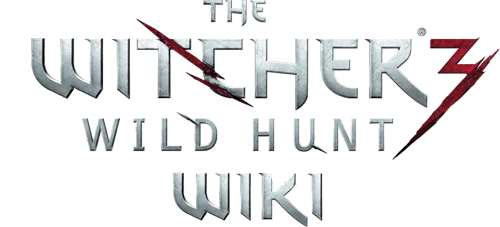
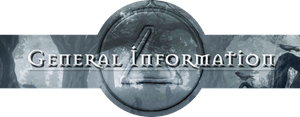
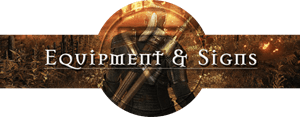
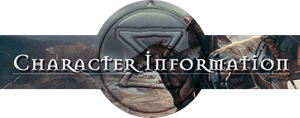
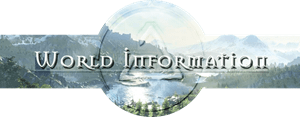
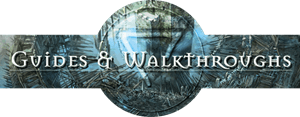





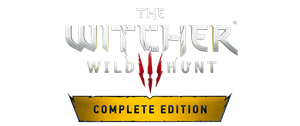








I will use AXII in order to change your mind about the game !
0
+10
-1